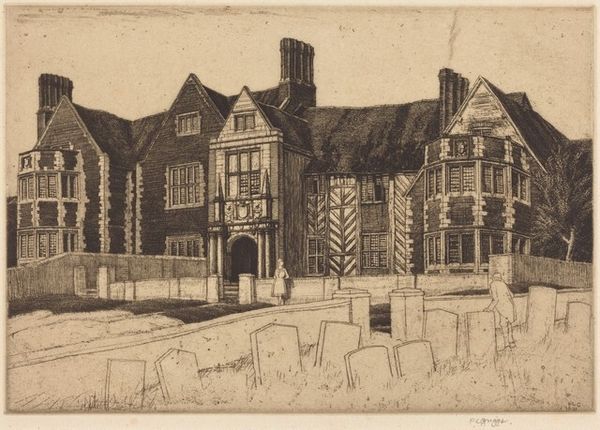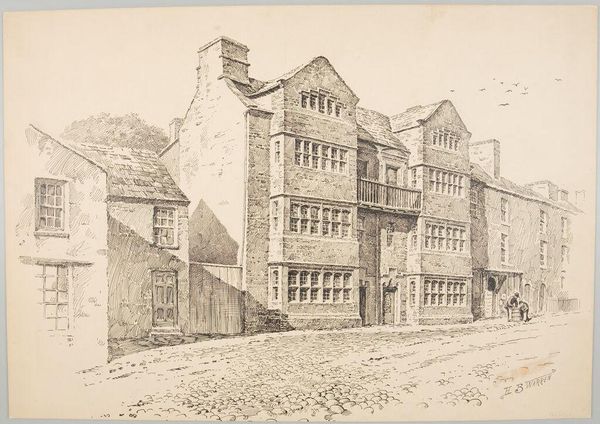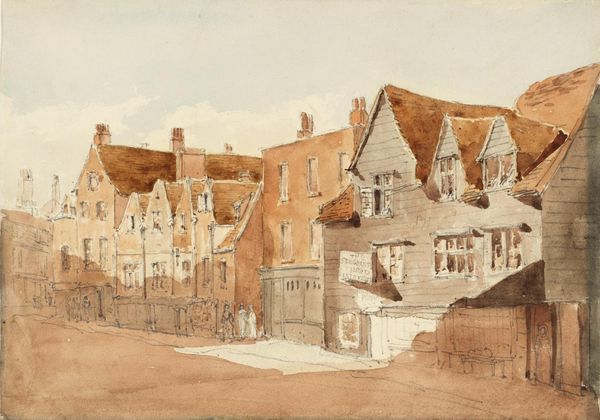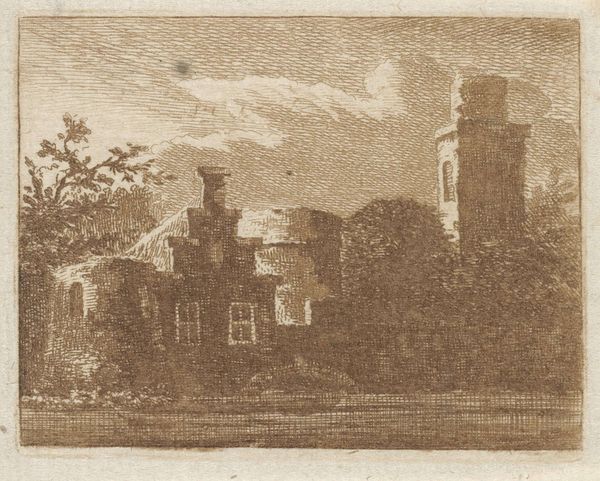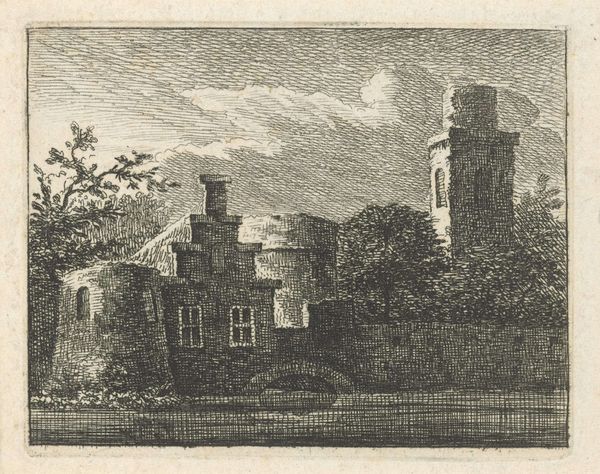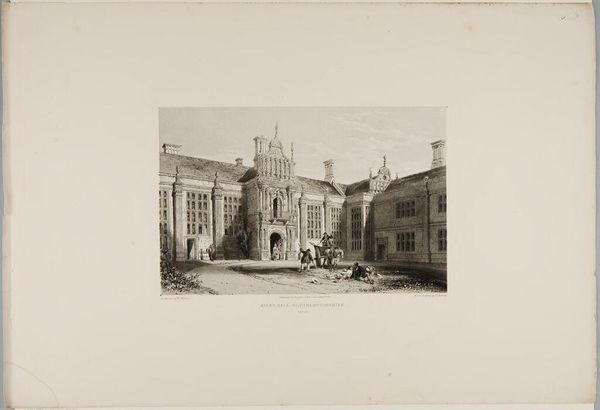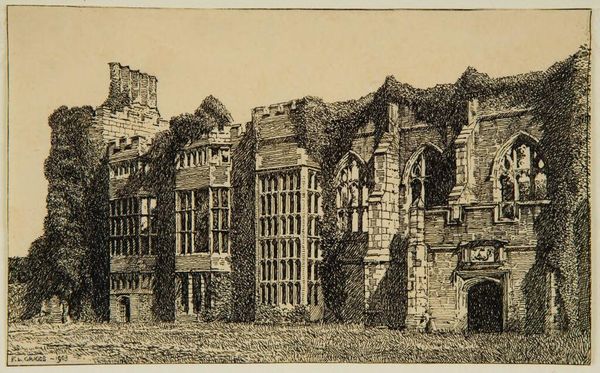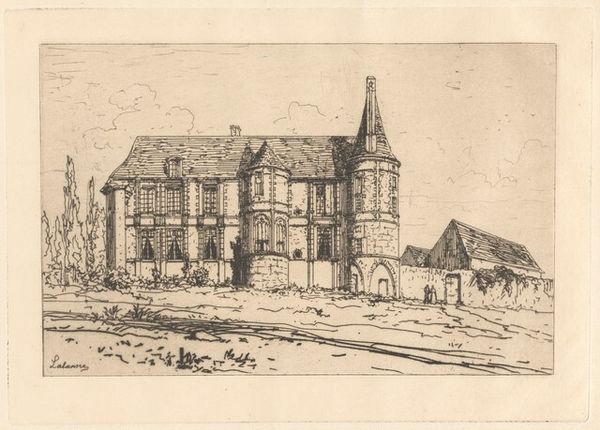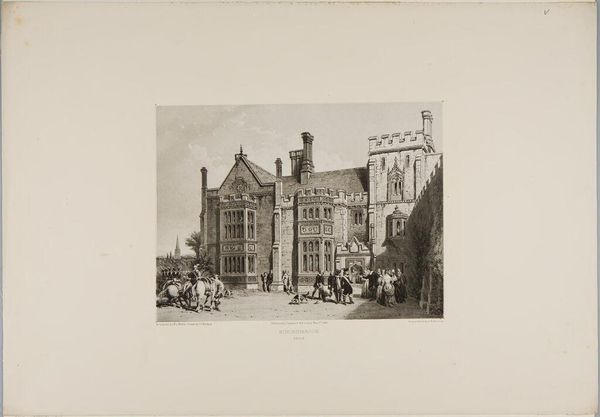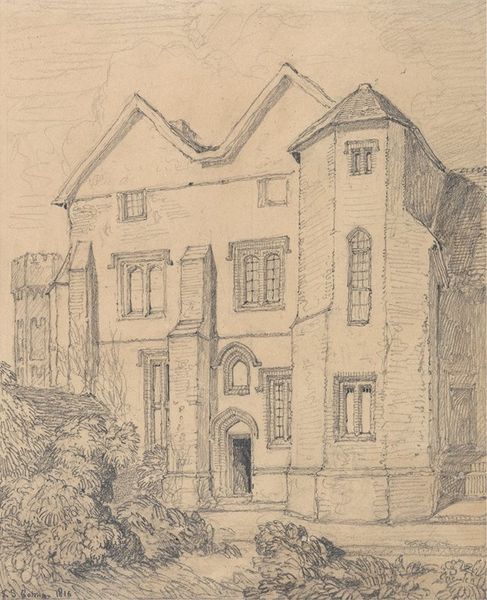
print, etching, architecture
#
art-deco
# print
#
etching
#
old engraving style
#
landscape
#
19th century
#
architecture
Dimensions: plate: 16.83 × 24.92 cm (6 5/8 × 9 13/16 in.)
Copyright: National Gallery of Art: CC0 1.0
Editor: Here we have F. L. Griggs's "The Maypole Inn," an etching from 1929. It's a very detailed image of a large, old building, and there's a quiet, almost melancholic feel to it. What do you see in this piece, from your perspective? Curator: This etching, on the surface a picturesque scene, invites a deeper interrogation into the romanticization of rural England in the interwar period. Griggs presents this inn – a potential site of community and gathering – with an air of solemnity. I wonder, does it unintentionally highlight the anxieties surrounding rapid industrialization and the loss of traditional ways of life? Notice the minute detail—do you think this painstaking method amplifies the sense of yearning for a past, perceived as more authentic? Editor: I hadn't thought about it in terms of social commentary. The detail felt more about accuracy, a faithful depiction. So, you're saying the choice of subject and the way it's rendered might speak to broader concerns about societal change? Curator: Precisely. And let’s consider who would be consuming these images. Likely, an educated, urban middle class. Is there perhaps an element of nostalgia here – a projected desire onto the rural landscape that obscures the realities of agricultural life and the class dynamics inherent within it? Does this image present a idealized view that ignores lived experiences, reflecting a selective amnesia? Editor: That's a really interesting point. I can see how a contemporary audience might view this scene differently, aware of those historical and social complexities. Curator: Exactly. It allows us to look critically at whose stories are told, and whose are omitted in these romanticized depictions of the past. The aesthetic choices can be seen as subtle but powerful affirmations of certain social orders and nostalgic national identities. Editor: Thinking about it now, there's a distinct lack of people actually *using* the inn, almost ghostly figures in the landscape. Curator: A great observation. So much of what's evoked comes from absences as much as what's there, in terms of labour, lived lives, stories effaced and excluded. How does that reading change your viewing of the print, seeing the ghostliness as not quaint or pretty, but something else? Editor: Definitely gives me a new way to approach art with seemingly simple, aesthetic appeal. I’ll look more deeply at social contexts going forward. Thanks! Curator: An artwork’s true potential lies not only in what it is but in what it allows us to critically rethink. Thank you.
Comments
No comments
Be the first to comment and join the conversation on the ultimate creative platform.

